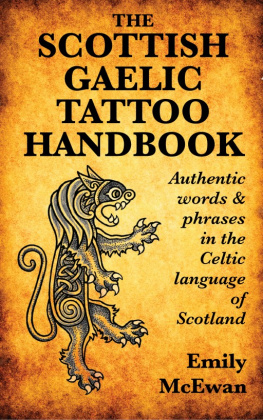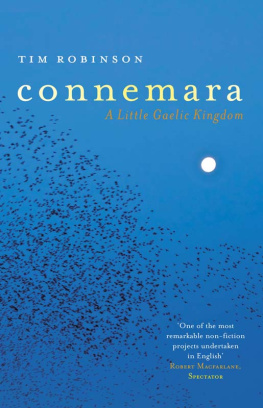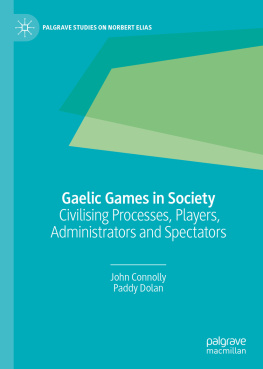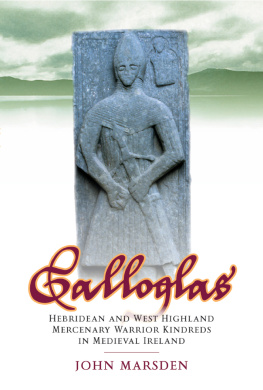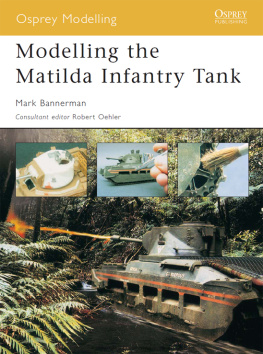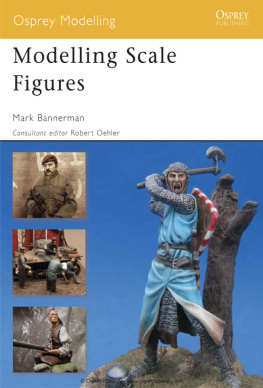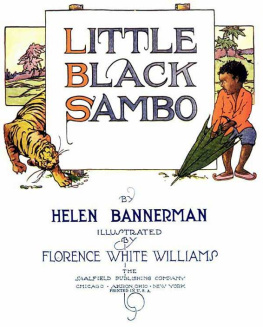First published in 2016 by
John Donald, an imprint of Birlinn Ltd
West Newington House
10 Newington Road
Edinburgh
EH9 1QS
www.birlinn.co.uk
ISBN: 978 1 906566 91 3
eISBN: 978 1 907909 37 5
Studies in the History of Dalriada
first published 1974 by Scottish Academic Press
Main text Copyright The estate of John Bannerman 2016
Introduction Copyright Dauvit Broun and Martin MacGregor 2016
The right of John Bannerman to be identified as the author of this work has been asserted by his estate in accordance with the Copyright, Designs and Patents Act, 1988
All rights reserved. No part of this publication may be reproduced, stored, or transmitted in any form, or by any means, electronic, mechanical or photocopying, recording or otherwise, without the express written permission of the publisher.
Every effort has been made to contact original publishers for permission to reproduce essays previously published elsewhere. If contacted, the publishers will be pleased to rectify any omissions or errors at the earliest opportunity.
British Library Cataloguing-in-Publication Data
A catalogue record for this book is available on request from the British Library
Typeset by 3btype.com
Printed and bound in Britain by Bell and Bain Ltd, Glasgow
Introduction
Dr John W. M. Bannerman, the twentieth centurys foremost historian of Gaelic Scotland, died on 8 October 2008 following a lengthy illness borne with characteristic dignity and courage. It was entirely fitting that he should die at home at the Old Manse Farm, Balmaha, a great constant of his life. He was born there in 1932, the son of John Bannerman Lord Bannerman of Kildonan, the renowned Gaelic activist, Liberal politician and Scottish rugby internationalist and Ray Mundell, a farmers daughter from Sutherland, to whom he owed his lifelong interest in farming. They had four children: one of Johns sisters was the late Ray Michie, Baroness Michie of Gallanach, Liberal Democrat MP for Argyll and Bute from 1987 until 2001. On his fathers death in 1968 John took over the farm, running a flock of Blackface sheep and a fold of Highland cattle. He did his best to manage the farm in as natural a way as possible while being all too aware that it had to be financially viable. A hobby farmer he was not. He was very conscious that what he had inherited others had created, and that he was only its custodian for generations yet to come. His wish was for a thriving rural community and not a wilderness.
Gaelic was another constant, and at the root of Johns other profession. Between school and university he spent an enjoyable year with Ian and Annag MacKinnon in Daliburgh, South Uist, improving his Gaelic and learning from Bean Eardsaidh Raghnaill and others part of the store of traditional songs which he would sing in his fine tenor voice. He was one of the first honours students in Celtic at Glasgow University under the first professor of Celtic, Angus Matheson. He continued his studies at Cambridge in what is now the Department of Anglo-Saxon, Norse and Celtic, completing his doctoral dissertation there under Kathleen Hughes. Teaching Gaelic in schools beckoned as a possible career, but following a year in the Celtic Department at Aberdeen, he was appointed as a lecturer in Scottish History at the University of Edinburgh in 1965. From 1968 he divided his week between farming and academe until his retiral as senior lecturer in 1997 allowed him to devote himself full-time to the farm.
As a scholar, Johns natural home was the era between the Romans and the twelfth century when the Scottish kingdom first began to take shape. The period had no place of its own in the History departments of Scottish universities until his appointment in 1965. Up to this point early Scottish history was taught by professors of Celtic if it was taught at all at a specialist level, and it was under that aegis that John first developed as a scholar. Over 30 years, by dint of the quality of his scholarship and his influence upon the next generation, it was his achievement to raise the profile of the Gaelic dimension within Scottish history, and to see his students embed early Scottish history and the history of medieval Gaelic Scotland in the teaching and research of History departments.
John Bannermans work can be divided roughly into three phases. The first, from his PhD of 1963 to the mid-1970s, was focused on pre-Viking Dl Riata. Overall his publications represent an astonishing array of original research and fresh thinking across the entire span of medieval Gaelic history that is never likely to be equalled in its breadth, scholarship and consistency of purpose.
His career began with his PhD thesis: an edition and study of Senchus fer nAlban (more commonly known today as Mniugud Senchusa Fher nAlban, which can be translated as Explanation of the History of the Men of Scotland). This was published in instalments in Celtica between 1966 and 1971 and then republished, with a major new section at the end, as the predominant element of his Studies in the History of Dalriada (Edinburgh, 1974). Mniugud Senchusa Fher nAlban is fundamental for our understanding of the political configuration of Scottish Dl Riata and the genealogy of its leaders up to the reign of Domnall Brecc (62942). It has also attracted attention because of its unique surveys of houses and of fighting strength. The earliest surviving manuscript belongs to the mid-fourteenth century, which could go some way to explaining why some of the prose makes little or no sense. But copying errors cannot explain all its inconsistencies and contradictions. True, it is not uncommon to find alternative versions of genealogies, even cheek-by-jowl with each other. Even by these standards, though, Mniugud Senchusa Fher nAlban is an exceptionally difficult text to read and make sense of. It was John Bannermans particular achievement that he made it intelligible to generations of historians. He argued that both survey and genealogy were originally composed in the seventh century (no later than 660), and that a key stage in the texts transmission was an edition and translation undertaken in the tenth century for the purpose of binding Cenl Loairn and Cenl nOengusa to Cenl nGabrin through the device of making their eponyms (Loarn and Oengus) brothers of Fergus Mr, progenitor of the kings of Alba at that time. In this expository tour de force Bannerman used his intimate knowledge of Irish chronicles and law tracts to bring a sense of order to this frighteningly disordered text. The picture of the society, politics and key individuals of Dl Riata which Bannerman created soon became embedded in the historical consciousness of scholars and students alike particularly his oft-reproduced conjectural mapping of the three main cenla of Dl Riata. It is only recently that anyone has begun to try to think beyond Bannermans edition and synthesis and look afresh at some of the more radical textual and historical problems posed by this material.
Bannermans most important work in this first early-medieval phase of his career is his article establishing the existence of an Iona Chronicle to 740. This appeared in an article with the beguilingly simple title Notes on the Scottish entries in the early Irish annals, originally published in


